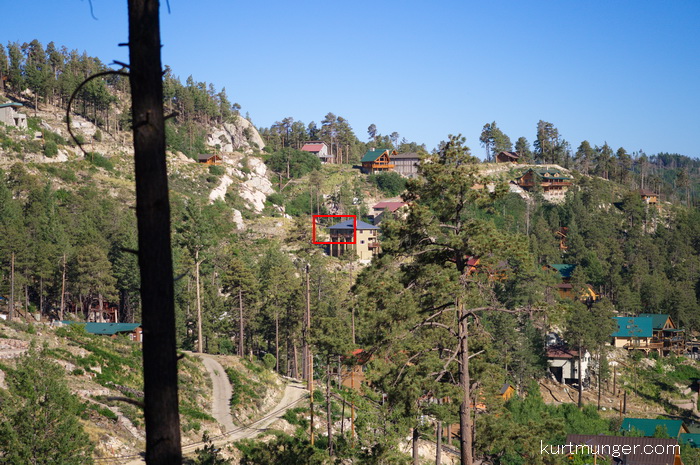 |
| Box and contents |
The Sony NEX-C3 was used for this review. For a better understanding of terms and methods used in this review, go here. The usual center, mid-section and corner crops are located at the very bottom of the page.
Introduction.
The Sigma 60mm F/2.8 became available in early 2013, and is currently made for Sony NEX APS-C and Micro four thirds camera systems. I’ll be reviewing the Sony NEX version here. This lens is available in a black or silverfinish.
Sigma claims the 60mm F/2.8 DN A (digital neo and Art series) telecentric optical lens features SLD (Special Low Dispersion) glass, which helps minimize axial and transverse chromatic aberration, and glass mold aspherical lenses help minimize coma. Sigma omitted ‘OSS’ or optical stabilization, probably to keep the price point down as far as possible—a sign of the times. On these new mirrorless lenses Sigma installs the aperture blades in the reverse, meaning the tips of the blades are showing through the front element, it’s usually the other way around.
Fit and finish are very good. The lens appears to be clad in high quality plastic with a metal mount. The lens is made in Japan, and is written in big (but unpainted) letters around the front element!! Apparently Sigma is proud they didn’t offshore it. When shaking the lens, it sounds like something is loose inside, and in fact the middle group is just floating around in the center of the lens, but when it gets power from the camera, it stays put; this procedure also takes a couple of seconds, and lengthens the start up time, the owners manual alludes to this.
Budget lens reality; Sigma basically says in the manual that sending the lens in for repair from water or other damage is a waste; in other words, when the lens fails for whatever reason, unless covered under the warranty, throw it away. Also, most likely due to potential tin whisker electrical problems, Sigma says it may only keep replacement parts available for repair for a period of one year or less—smart for Sigma, and either good or bad for the customer as he’s going to get a refund if under warranty, or throw the lens away if not.
Filter size is 46mm, which is a clear nod to Panasonic and Olympus that have numerous micro 4/3 lenses using this size. Unfortunately, Sony makes no lenses with this filter size, so you might have to get a step-down ring to mount your 49mm filters.
Focusing. This lens auto-focuses quickly and mostly accurately, and has a very quiet linear focusing motor so it can be used for video. The front filter ring doesn’t turn when focusing, so your polarizers and grads will work great. The focusing ring is easy to turn, and is damped about right; however, the focusing ring covers the whole lens body, and is very slick, so good luck manually focusing it if your hands are sweaty. If you hold the lens to your ear when the camera is turned on, you can just barely hear the focusing mechanism whirring for a moment.
In the box is the lens, front and rear caps, small plastic hood, a padded softcase and owner’s manual.
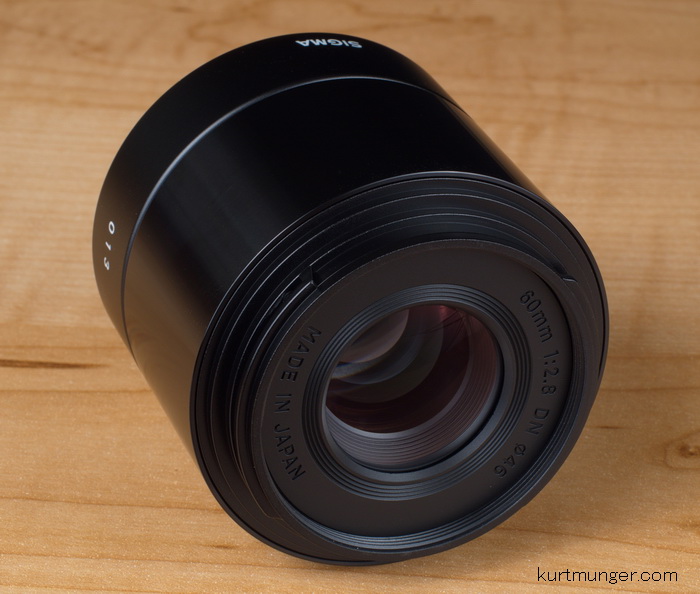 |
| Front element, new unpainted letters as a cost saving measure! |
 |
| Back side |
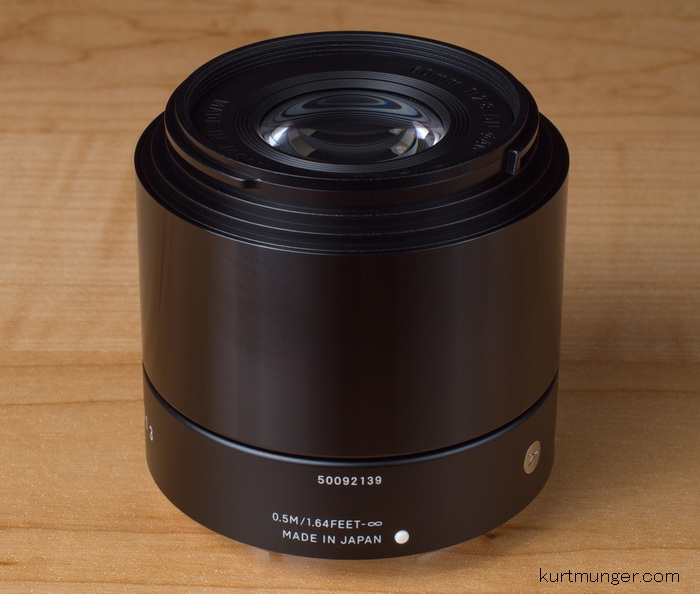 |
| Side shot. |
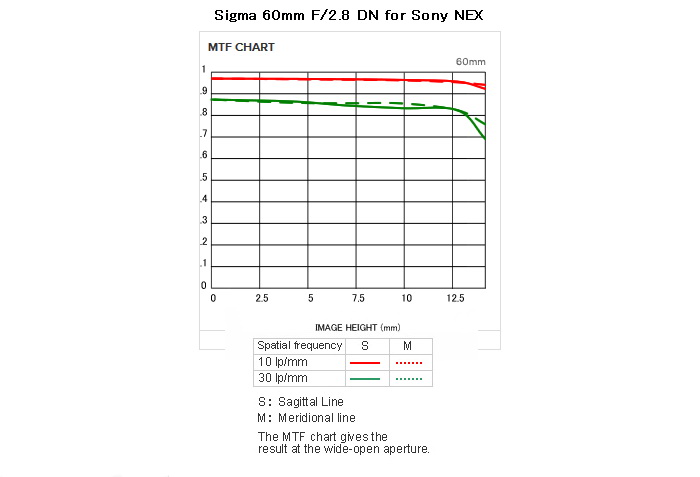 |
| Sigma supplied MTF graph |
General information and specifications.
|
Lens
|
|
|
Box contents
|
Front cap, rear cap, small hood, padded softcase and user’s manual.
|
|
Cost
|
|
|
Build quality
|
Very good.
|
|
Additional information
|
This model is made for Sony ‘E’ mount NEX cameras, and won’t work on ‘A’ mount cameras. Also available for micro 4/3. Comes in black or silver. |
Specifications below
|
|
|
Optical configuration
|
8 elements in 6 groups
|
|
Angle of view
|
26.6˚ Equivalent to about 90mm in full frame (135 format) terms.
|
|
Aperture
|
7 blades, curved
|
|
Full frame and APS-C
|
Sony NEX APS-C only.
|
|
Depth of field and focus scales?
|
Nothing.
|
|
Minimum focus, image plane to subject
|
About 19.7″ (.5m)
|
|
Minimum focus, end of lens barrel to subject
|
About 15.35″ (390mm) from front of lens barrel.
|
|
Hard stop at infinity focus?
|
No.
|
|
Length changes when focusing?
|
No.
|
|
Focus ring turns in AF?
|
No
|
|
Filter size
|
46mm.
|
|
Filter ring rotates?
|
No
|
|
Distance encoder?
|
Yes
|
|
Max magnification
|
1:7.2 or 0.14x
|
|
Min. F/stop
|
F/22
|
|
Sony teleconverter compatible?
|
No
|
|
Length changes when zooming?
|
N/A
|
|
Dimensions WxL (my measurements)
|
2.40″ x 2.24″ 61mm x 57mm.
|
|
Maximum extended length (my measurements)
|
Lens does not extend.
|
|
Weight bare (my scale)
|
6.5oz, (185g) bare.
|
Optical qualities summary.
Lens flare/ghosting. Poor control, see examples below.
Light fall-off. Nothing to worry about. See samples below.
Color fringing (CA). Excellent control.
Bokeh. Somewhat smooth. See crops below.
Color. Seems about the same as Sony lenses.
Close-up filter. Works ok, +4 tested.
Coma. None.
Regular filters: probably don’t cause any additional light fall-off, however, I didn’t test this as I don’t have any 46mm filters.
Filter size. 46mm. No Sony or Minolta lenses use this size, Sigma used it for the micro 4/3 system which has plenty of lenses already using 46mm.
Distortion. Mild pincushion type.
Distortion example directly below.
 |
| Mild pincushion distortion |
The distortion pattern is mild pincushion, distortion correction sliders are able to almost eliminate it.
Bokeh samples.
Bokeh looks pretty smooth at all subject to background distances, although there is a very slight outer ring at F/2.8. Spherochromatism shows itself as colored tinges around blurred highlights, such as when the foreground is blurred, you’ll get red outlined highlights, with the background blurred, you’ll get green outlined highlights, this goes away as you stop down, and is mostly noticeable on fast lenses when used wide open. In our case above, the green blends in nicely with the plant leaves, so it isn’t really noticeable in these crops.
Light fall-off
|
F/2.8 Infinity focus
|
F/4 infinity focus
|
|
|
|
There is not much of a problem with light fall-off or ‘corner shading’ with this lens at the widest aperture. At F/4 there is noticeable brightening of the image. Focusing at close range causes a slightly darker frame at F/2.8 than when focusing at longer distances.
Flare and Ghosting
|
Multi-colored ghosts and flare, F/5.6
|
Contrast loss and rear baffle reflection with sun far outside image, F/5.6
|
|
|
|
Flare and ghosting control is poor; I see multi-colored blobs when strong lights are inside the image, and a serious loss of contrast even when the sun or other bright light source (such as a streetlight at night) is outside the frame. Use you hand to shield the front element whenever possible, otherwise you’ll be sorry. On the plus side; there isn’t much of a problem when taking pictures of sunrises or sunsets as the lens seems to be able to handle this level of brightness.
Let’s check out the close-focus capabilities of this lens.
The sample shot was taken with the Sony NEX-C3 16.2MP camera, so don’t compare it with others that were taken with 12 or 24mp sensor cameras. The subject is a standard US stamp, 0.87″x 1.0″ or 22mm x 25mm. The shot was taken as close to the subject as focusing allowed; in this case 15.35″” (390mm), measured from the front of the lens barrel to the subject.
The Sigma 60mm F/2.8 has a reproduction size of 1:7.2, which is a little small. F/5.6 was the sharpest close focus aperture. The close focus shot is pretty sharp with decent contrast, but it’s nothing special.
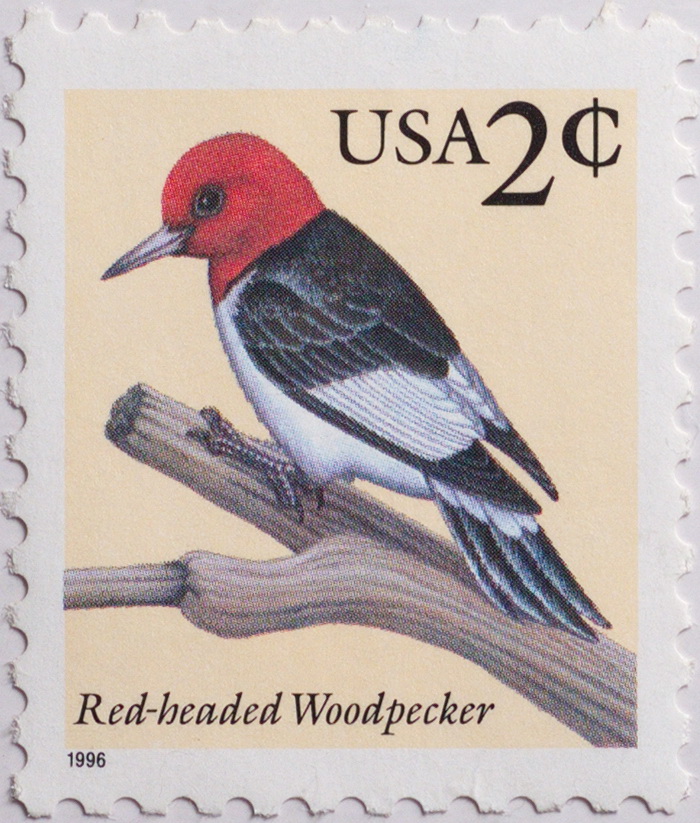 |
| As close as you can get, F/5.6. No larger size |
Conclusion
Sigma delivers another optically great, and very affordable lens for NEX and MFT users, with similar performance to the Sigma 19mm that I like so much. The Sigma 60mm F/2.8 delivers outstanding results across the frame at F/5.6, and would be a nice low light lens for night time street shooters needing F/2.8. Additional qualities include; excellent control of color fringing, and no problems with coma, nor would I expect any in this lens. Build quality is very good, as well as focusing accuracy; at least on my camera; it’s also very compact and light-weight. Minor disappointments include flare and ghosting control, and no optical stabilization; so big deal, you can’t have it all for pocket change, right?
The focal length of 60mm is not the most useful in my opinion, unless you’re looking for an inexpensive portrait lens. However, people wanting to make multi-frame panoramas will love this lens, because you’re only going to be stitching the very best centers and middles of each individual image, leaving you with one gigantic tack sharp image.
The Sigma 60mm F/2.8 DN delivers a lot of bang for the buck, and I highly recommend it for those on a budget looking for this focal length.
|
